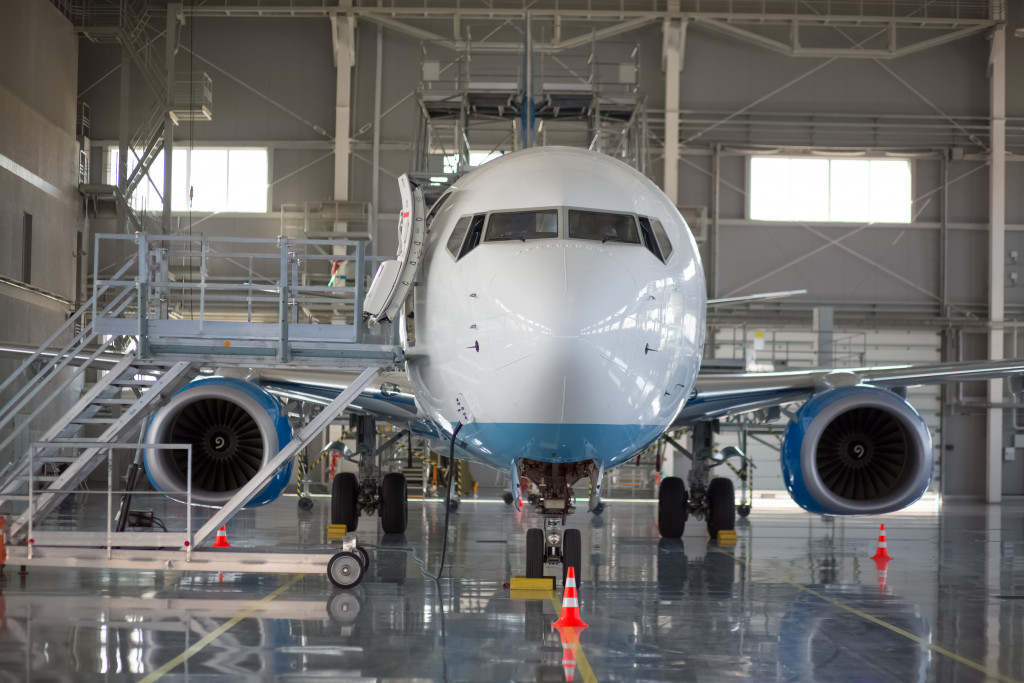Aircraft maintenance technology has come a long way in the last few years. New tools and techniques are being developed, making aircraft maintenance faster, easier, and more accurate. This is good news for the aviation industry, constantly looking for ways to improve efficiency and safety. This blog post will take a closer look at some of the most promising new aircraft maintenance technologies. We’ll also discuss how they’re changing the future of aviation.
Robotics and drones
Robotics and drones are increasingly being used in aircraft maintenance technology. Robotics can automate tasks such as welding and fabricating parts and inspecting and repairing aircraft. Drones can be used to inspect aircraft for damage, identify potential hazards, and even carry out repairs. This technology is changing the face of aircraft maintenance, making it faster, easier, and more efficient. In addition, it reduces the cost of aircraft ownership and operation. As this technology continues to develop, it will likely have an even more significant impact on aviation.
3D printing
Another new aircraft maintenance technology is 3D printing. This technology is being used to create parts for aircraft. It has the potential to revolutionize the way aircraft are maintained. 3D printed parts are strong and lightweight, and they can be created quickly and cheaply. This means that aircraft can be repaired faster and more efficiently, which is a massive benefit for the aviation industry.
Easy to carry tests and kits
 One of the most promising new aircraft maintenance technologies is the air data test kit. This tool allows mechanics to quickly and easily test the airspeed, altitude, and other parameters of an aircraft. The air data test kit is already being used by some airlines, and it’s expected to become more widely used in the future. This tool will help airlines save time and money by reducing the need for costly and time-consuming flight tests.
One of the most promising new aircraft maintenance technologies is the air data test kit. This tool allows mechanics to quickly and easily test the airspeed, altitude, and other parameters of an aircraft. The air data test kit is already being used by some airlines, and it’s expected to become more widely used in the future. This tool will help airlines save time and money by reducing the need for costly and time-consuming flight tests.
Big data solutions
The future of aircraft maintenance is being shaped by the rise of big data solutions. By collecting and analyzing vast amounts of data, these solutions are helping airlines to identify maintenance issues before they become problems. As a result, airlines can reduce downtime and save millions of dollars each year. In addition, big data solutions also provide airlines with valuable insights into trends and patterns. This information can be used to improve safety and efficiency and make better decisions about fleet management. Ultimately, big data solutions are revolutionizing how aircraft are maintained, and the benefits are clear. Airlines that embrace this technology will be well-positioned to thrive in the years ahead.
Digital twinning
Modern aircraft are incredibly complex machines, and keeping them in good working order is critical. To do this, aircraft maintenance technicians rely on digital twinning. Using data from sensors, cameras, and other sources, a digital aircraft model is created. This model can be used to track the performance of individual components and identify potential problems. By catching potential issues before they cause problems, digital twinning helps to keep aircraft safe and reliable.
Additionally, it can be used to create simulations of maintenance procedures, ensuring that they are carried out correctly before being carried out on actual aircraft. As technology develops, digital twinning is likely to play an increasingly important role in aircraft maintenance.
Blockchain
A fundamental tenet of blockchain is that it enables tamper-proof records. So it’s no surprise that the aviation industry is investigating ways to use the technology to track aircraft maintenance. The idea is that blockchain could be used to create a digital logbook for an aircraft, recording all maintenance and repair work throughout its lifetime. This would provide a complete and immutable record of an aircraft’s history, making it easier to identify potential problems and ensuring that only qualified personnel perform work on the plane.
Blockchain could also be used to streamline other aspects of aircraft maintenance, such as inventory management and parts ordering. In a nutshell, blockchain has the potential to make aircraft maintenance more efficient and reliable. As the aviation industry continues to explore the use of blockchain, this technology will likely play an increasingly important role in keeping planes in the air.
The bottom line
Aircraft maintenance is changing, and the changes that are taking place are likely to have a profound impact on the aviation industry. New technologies are making it easier and faster to maintain aircraft, and big data solutions provide airlines with valuable insights into trends and patterns. We can only expect these changes to continue in the years ahead, and the impact will be felt throughout the aviation industry.

